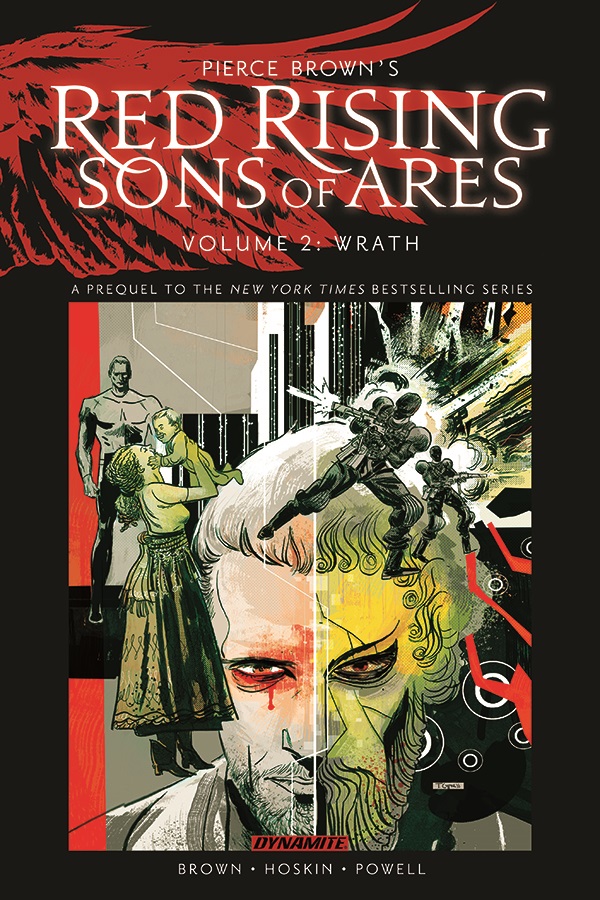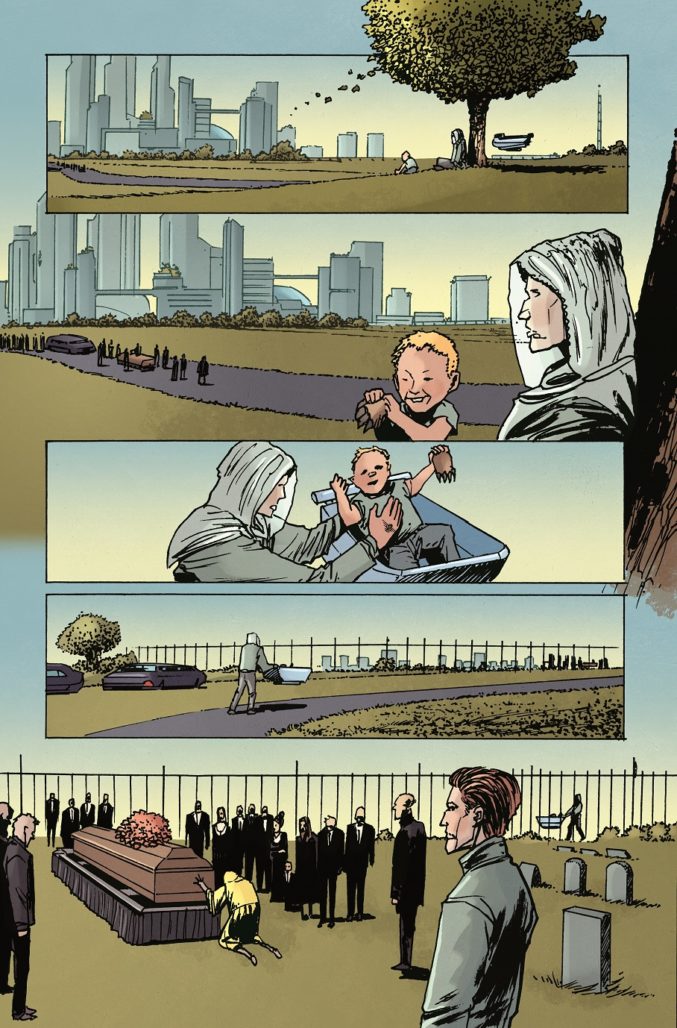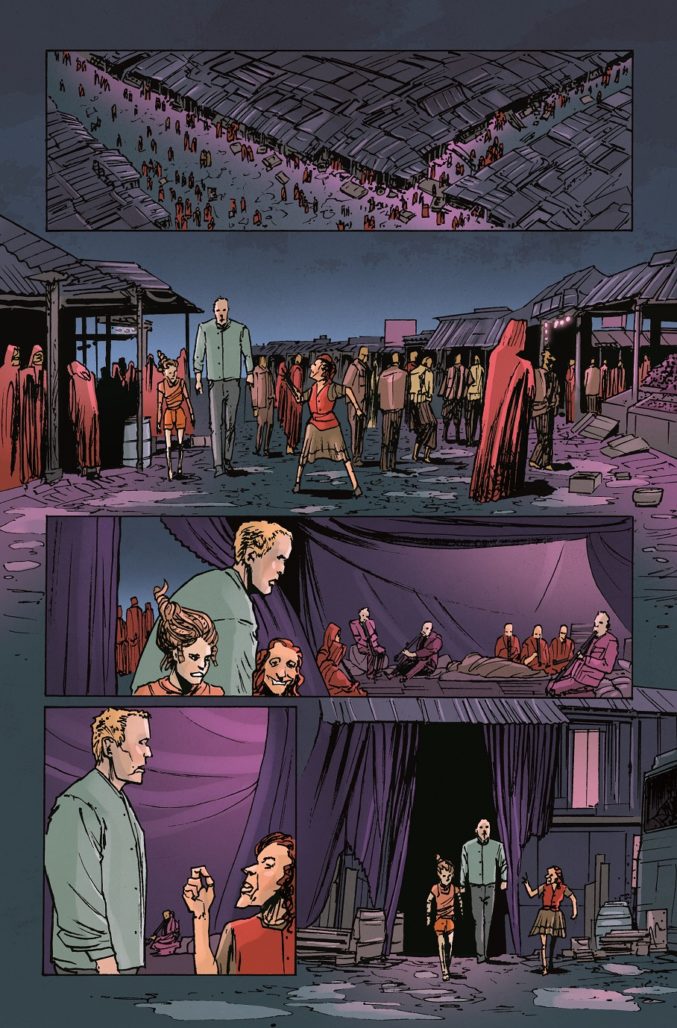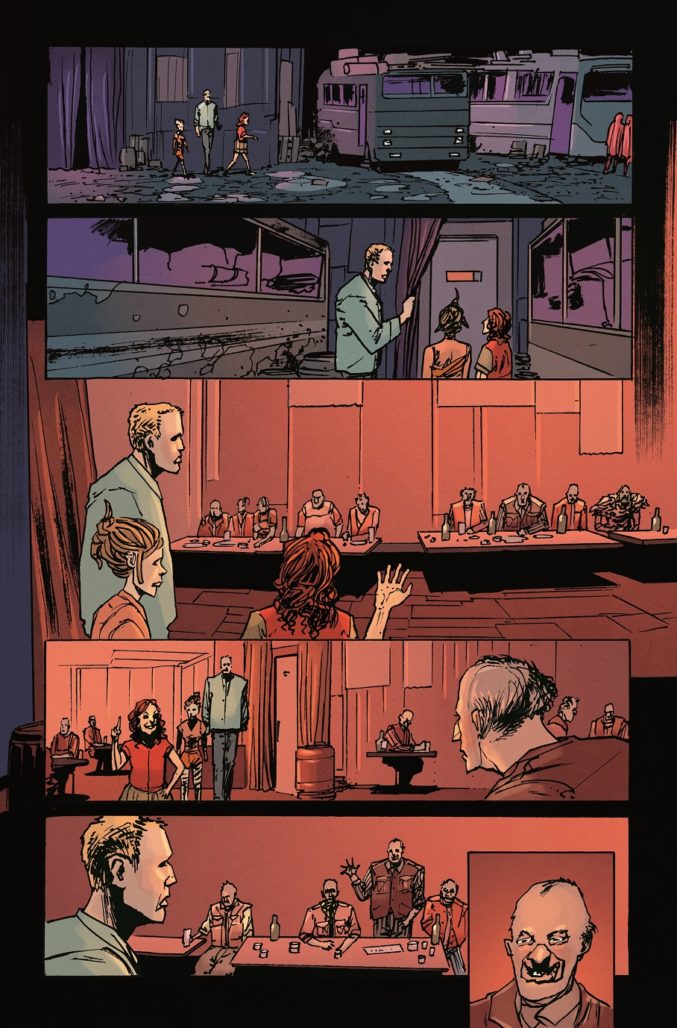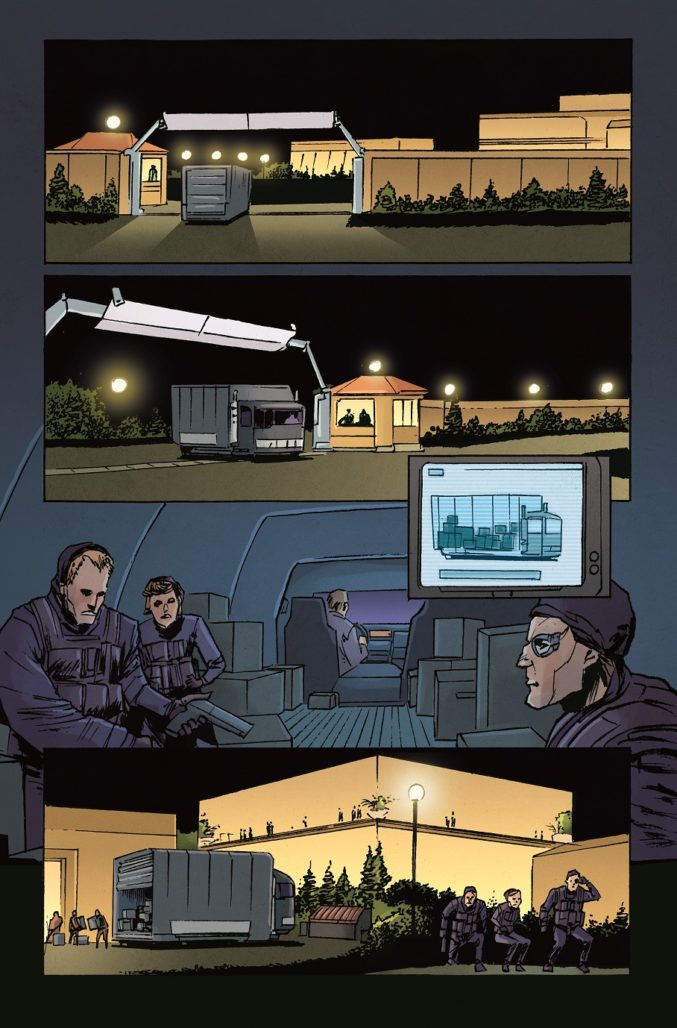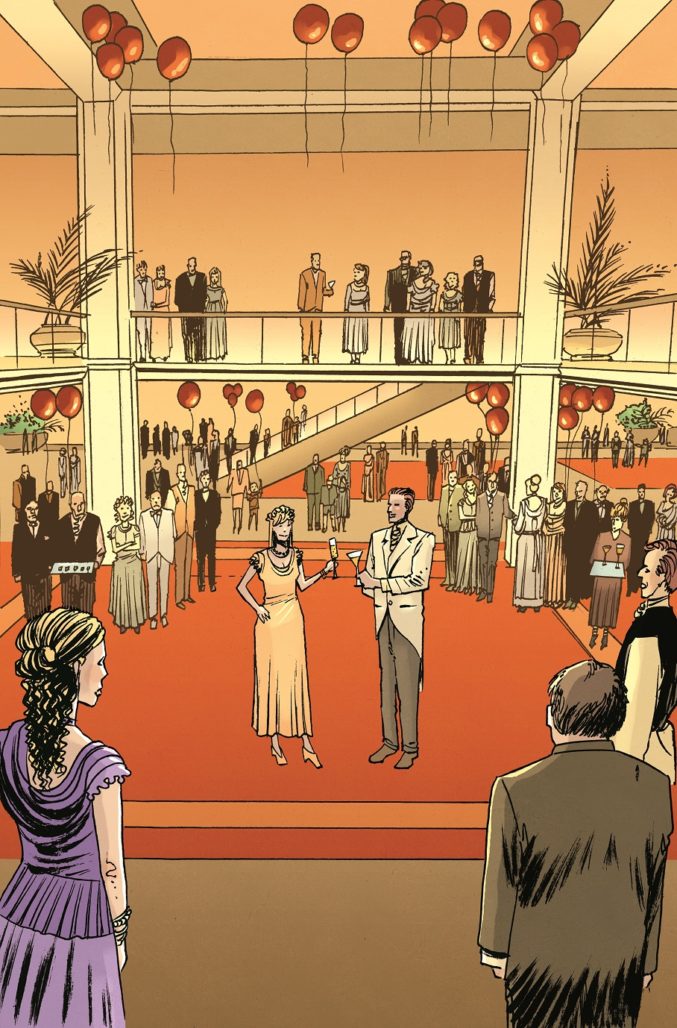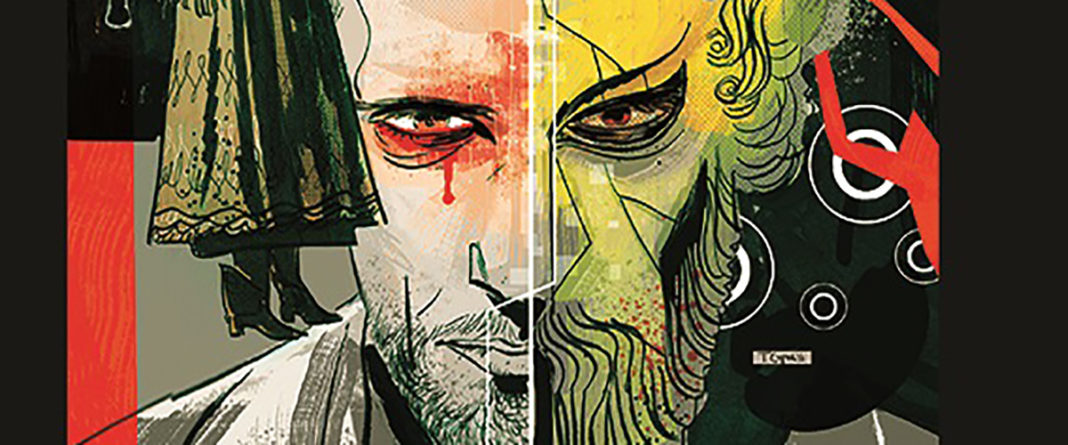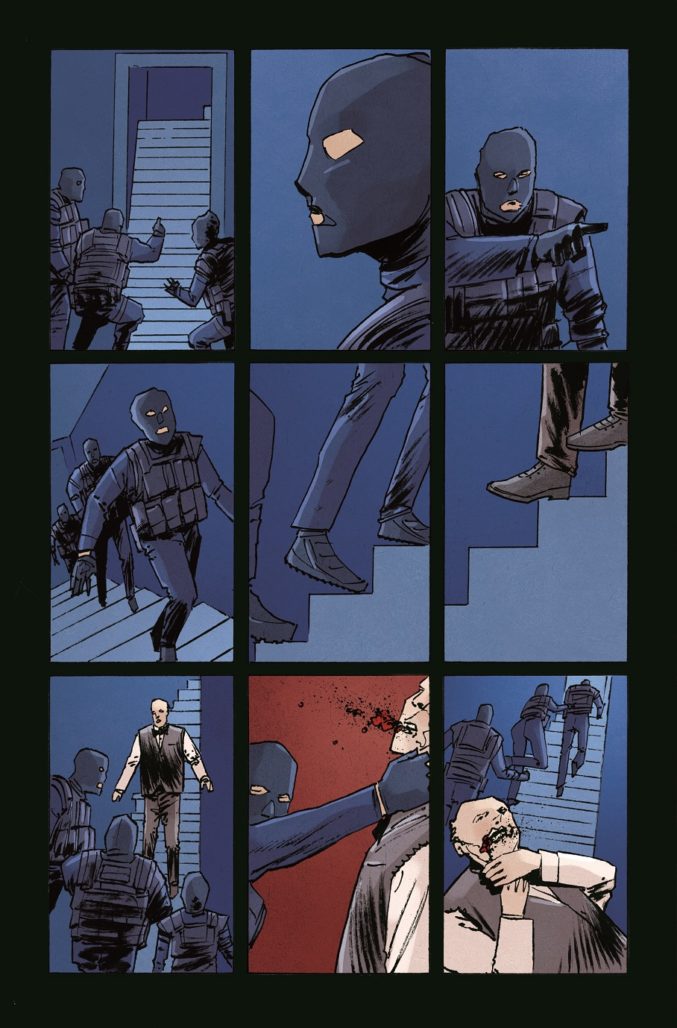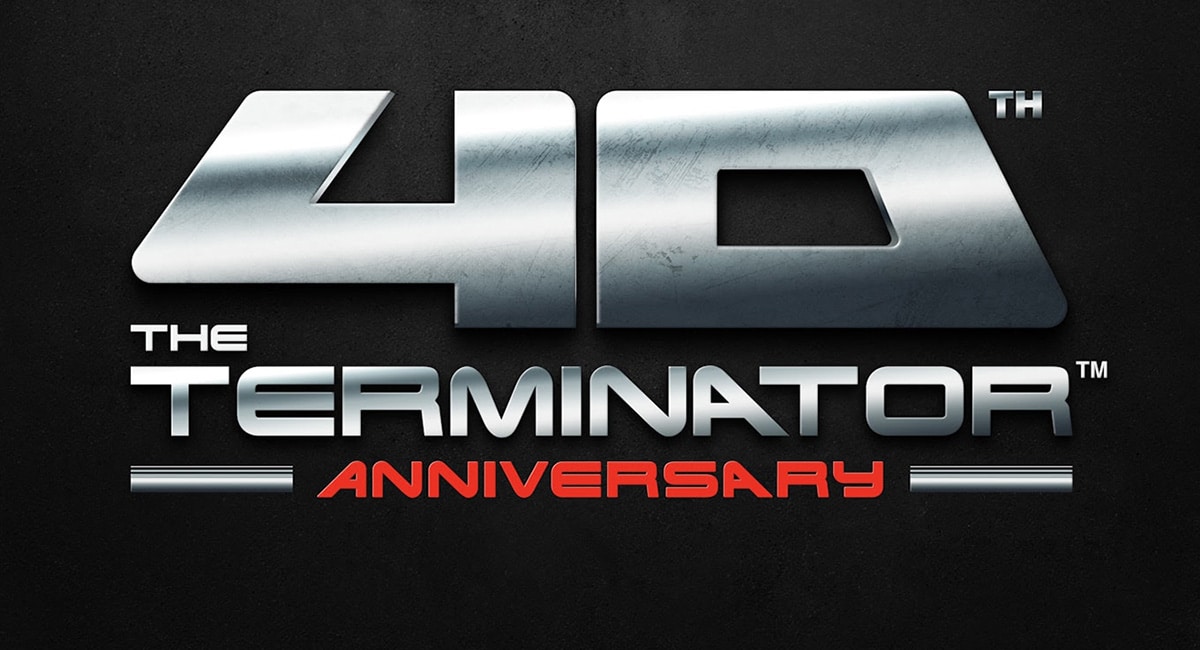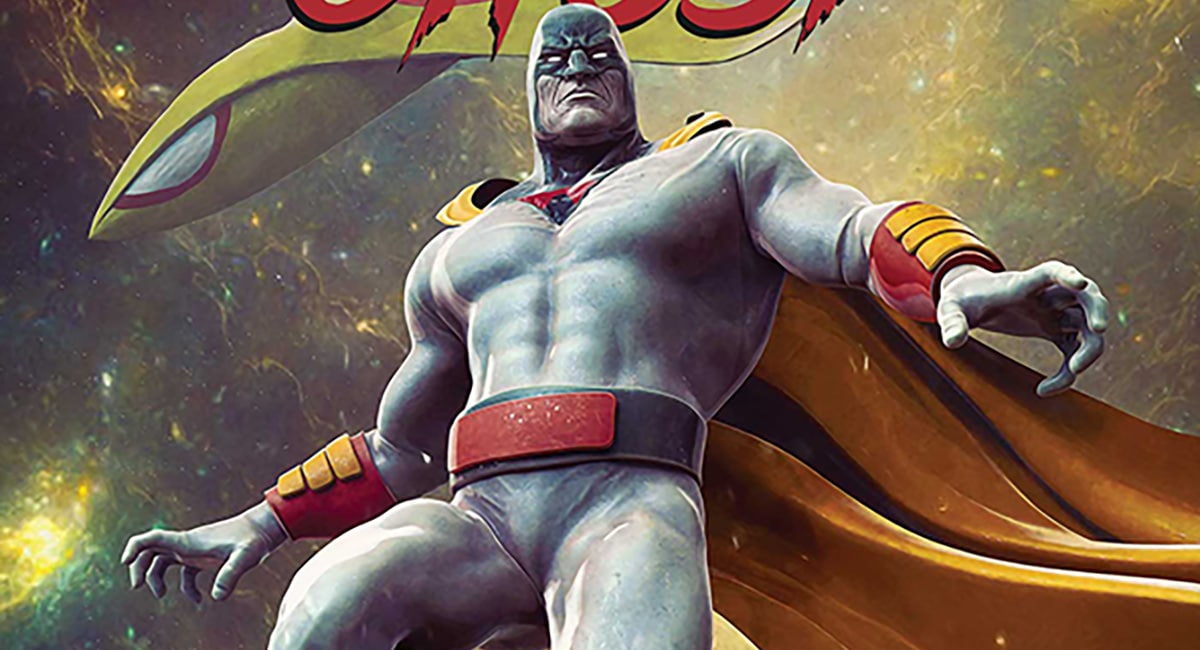This November, fans of the Red Rising series by Pierce Brown will get another in-canon installment with Pierce Brown’s Red Rising Sons of Ares Volume 2: Wrath. With co-writer Rik Hoskin (Brandon Sanderson’s White Sand) and artist Eli Powell (Yakuza Demon Killers), Brown’s sci-fi world expands as the prequel follows Fitchner’s quest for revenge while the Sons of Ares seek out the Golds who have wronged his family. Cover artist Toby Cypress (Omega Men, The White Suits), colorist Dee Cunniffe (The Wicked + The Divine, Paper Girls), and letterer Tom Napolitano (Justice League, Aquaman, Red Sonja) complete the creative team.
Brown chatted with the Beat about changing from novels to comics and what fans old and new can expect.
Deanna Destito: How has it been expanding your universe to the comic medium?
Pierce Brown: Bloodydamn fun. Novel writing can be a solitary affair. At its best, it is a conversation between the reader and the writer, filled with ambiguity and fleshed out visually by the reader’s mind. But comics are communal. The images are defined, the story tighter, and the crafting a team effort. On the creative side, it was jarring at first (though still more pleasant than film adaptation), but Rik Hoskins (the writer) and Eli Powell (the artist) made my first experience an uplifting one. The best fun is had in the visuals and the casual worldbuilding even the smallest detail can render.
Destito: Why did you choose a prequel trilogy?
Brown: I wanted the story to be accessible to those who had not yet read the first three Red Rising books. And since I was expanding the narrative to three more novels, it seemed the most fertile pasture for exploration would be found in a prequel. So much of the Red Rising world is drenched in mythology–past wars, grudges, shadowy origins–that it felt a natural path to take, and a fun exploration to embark upon. In the novels, Ares is a mysterious figure who masterminds a rebellion against his tyrannical government. Yet he isn’t the focus of the story. His understudy, Darrow, is. I wanted a field more or less empty of the important characters in Red Rising so Ares would have his chance to shine.
Destito: The graphic novels are in canon with your novels. How do these stories expand what was laid out in the books?
Brown: One of the nastier deals with devil that authors make is the sacrifice of depth for pacing. The Red Rising novels often move with the pace of a runaway train. Often this comes at a steep cost to lore, backstory, and context. With Sons of Ares, I get the chance to hang meat and wrap blood vessels around the bones of characters, cultures, and political movements within the world of Red Rising. Much of the focus lies on Fitchner/Ares and his enemies, the Board of Quality Control–which could best be compared with the SS. But what I enjoy the most is the idea that we are all the protagonists in our own story. Many of the characters who populate these comics appear in the novels, or are mentioned without much thought. It’s fun getting to see what makes them tick, how they change, and the ripples their actions have in the future.
Destito: How has it been working with the rest of your creative team?
Brown: A pure delight. Rik and Eli took the lion’s share of the labor in this one, but that’s the fun of expanding a world. I get to see this weird culture of genetically altered space Romans and Vikings through their eyes. Does it always jive with my internal vision? No, but that’s the delight. It becomes familiar yet vaguely alien, and in many ways deepens the world for me as I realize there are quirks to the world I hadn’t thought of, visuals I hadn’t imagined, dynamics I hadn’t explored. As a novelist, you’re used to being isolated with your project. Adding voices other than my own allows me to see the tale with virgin eyes.
Destito: Are you a comic fan and if so what are some of your favorites?
Brown: I was desperately in love with X-Men when I was a kid. Batman and Spiderman were close seconds. I dabbled with Green Lantern, but my dad saw a scantily clad woman in one of the issues and quickly closed that door. Fortunately he never found my Conan or Typhoid Mary Wolverine issues. Libidinous! I’ve also read pretty much every Dark Horse Star Wars comic written up until 2006. Dark Empire and the X-Wing tales were my favorite. After that, Alan Moore seized the high-ground and has held it ever since.
Destito: Are there any other areas of the Red Rising world that you’d like to expand on, particularly in graphic novel form?
Brown: So many! I’d love to follow a Gray Praetorian within Legio XIII Dracones, the elite of the Sovereign’s black ops teams, and see their eventual disillusionment and defection (much like Baron Soontir Fel from Star Wars). Or perhaps explore the Conquering itself, where Gold rebelled from Earth’s dominion and fell upon the old empires there in the first Iron Rain. There’s a particularly devious Texan named John Merrywater who led a mech battalion against Luna and nearly turned the tide of the war single-handedly. I mean mech-clad Texans against eugenically altered supersoldiers in low gravity just sounds like a damn riot. And then there’s character pieces. One day I believe I’ll have to follow the career of Old Stoneside, Lorn au Arcos himself, during his tenure as the Rage Knight and his life as the tip of tyranny’s spear.
Pierce Brown’s Red Rising Sons of Ares Volume 2: Wrath is slated to debut in November. For those who prefer a digital version of the original graphic novel, head over to Comixology, Kindle, iBooks, Google Play, Dynamite Digital, ComicsPlus, and more. Visit Dynamite’s website for more info on the Sons of Ares series.
